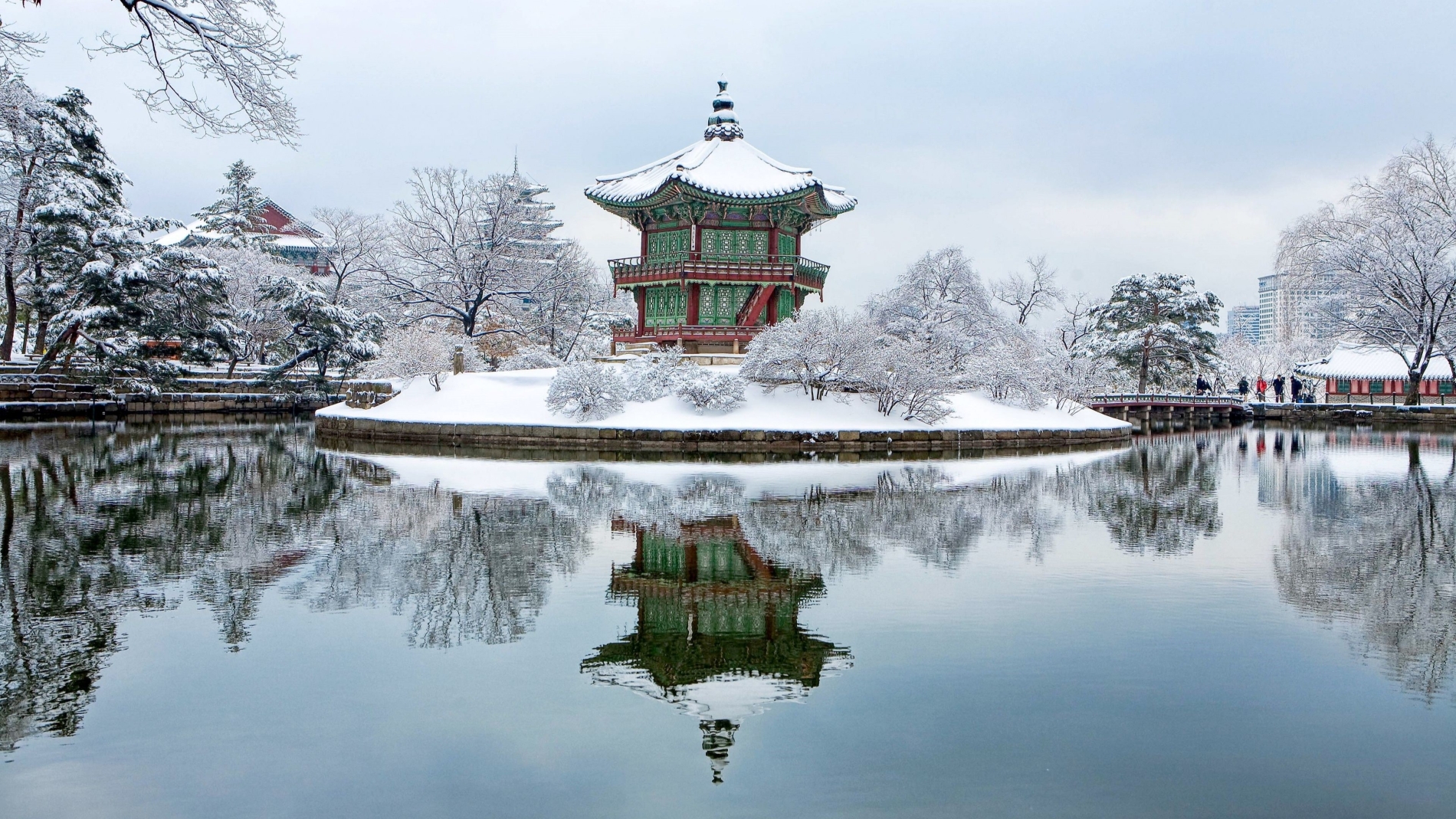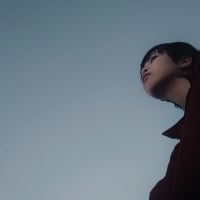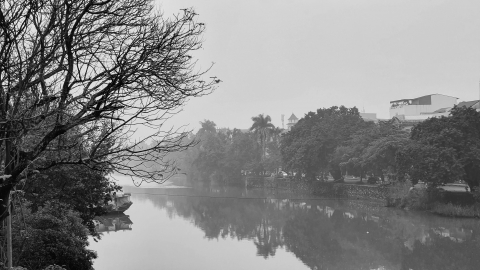Gyeongbokgung Palace (경복궁) or Gyeongbokgung Palace was first built in 1395. This is the largest of the five palaces of the Joseon Dynasty (1392 - 1910), and is also where the kings stayed during their reign.
However, throughout its turbulent history, Gyeongbokgung Palace has been destroyed and rebuilt many times. This place is the embodiment and witness of the history and tradition of Korea for over 8 decades.
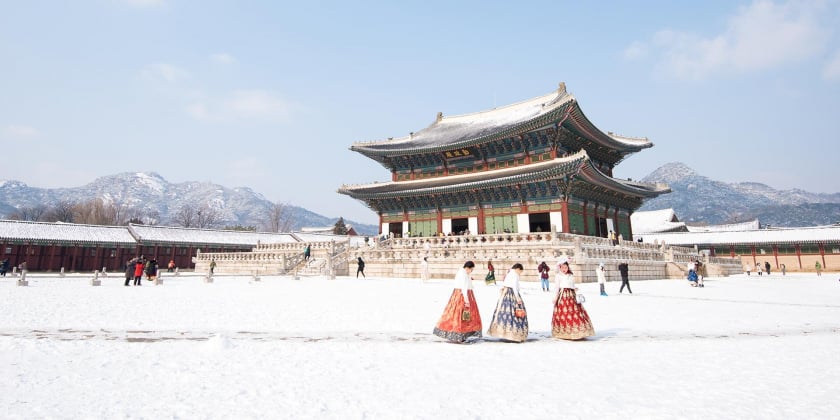
The highlight of architectural art
The pure white snow covering Gyeongbokgung is like a gift from nature, making the skillful combination of ancient Chinese architecture and traditional architecture of the Joseon Dynasty exude the nostalgic ancient beauty of a bygone golden age.
The palace uses five traditional Korean colors: blue, white, black, red, and yellow, symbolizing the five elements. The harmony of colors creates the majesty of Gyeongbokgung.
With an area of 400,000 m2, Canh Phuc Palace includes the following main areas: Can Chinh Palace, Khanh Hoi Lau, Quang Hoa Mon, Khang Ninh Palace, Giao Thai Palace. The main axis of the palace is Quang Hoa Mon and Can Chinh Palace.
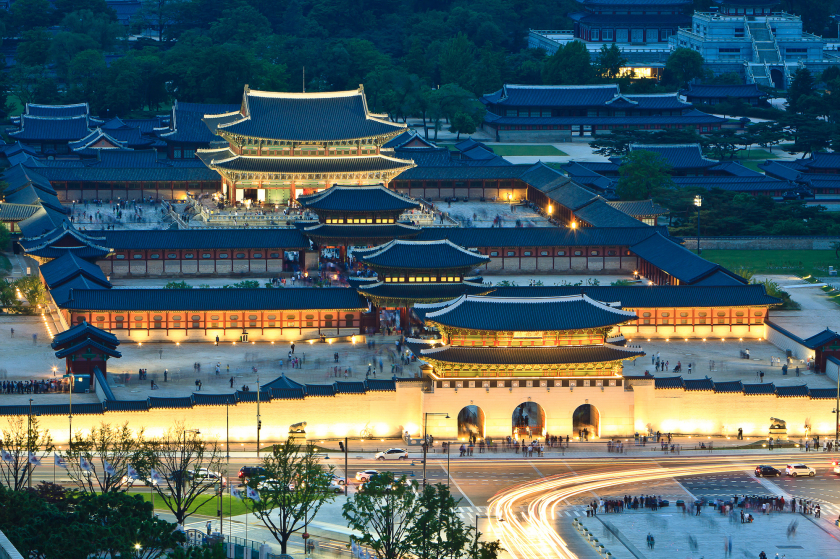
Other areas are built asymmetrically, creating a unified harmony and clear hierarchy.
The most special is Geunjeongjeon (근정전). This is where the throne is located and where official court activities such as holding court or receiving foreign envoys take place. The main hall is built mainly of wood, located in the center of a large rectangular courtyard. On top is a two-story stone platform. The interior motifs are very delicately and meticulously decorated, sculpted to depict dragons and phoenixes. The main hall is built mainly of wood, located in the center of a large rectangular courtyard. On top is a two-story stone platform. The interior motifs are very delicately and meticulously decorated, sculpted to depict dragons and phoenixes. Geunjeongjeon is the largest and most magnificent hall in the architectural complex of Gyeongbokgung.
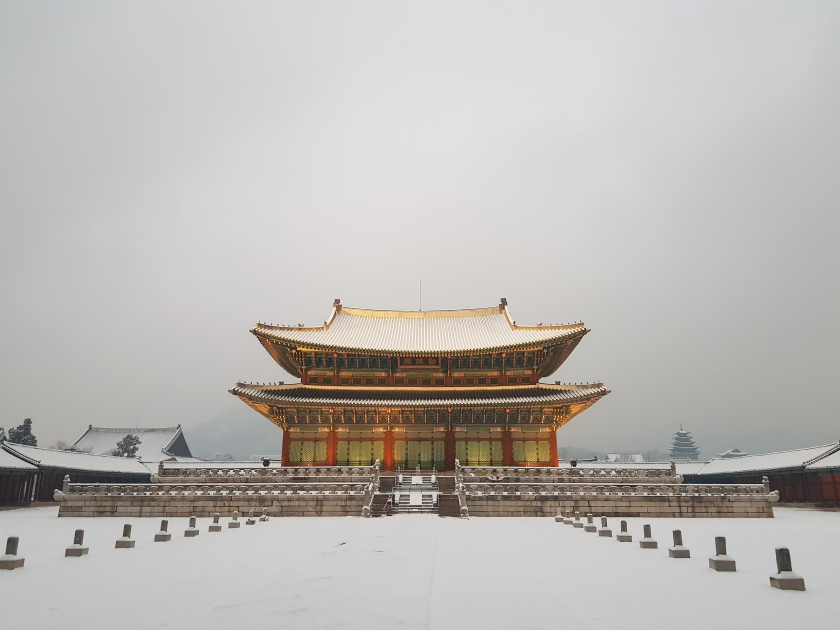
Gyeongbokgung Palace is the largest and most magnificent hall in the Gyeongbokgung complex.
In addition, one of the most beautiful places in Gyeongbokgung is Gyeonghoeru (경회루) located in the middle of an artificial lotus pond, next to the artificial mountain Mansesan (만세산). This place is often used to hold banquets to entertain foreign envoys or when the country has important events, to reward members of the royal family, to hold rain-praying ceremonies...
The structure of Khanh Hoi Lau is entirely made of wood, built from 48 large stone pillars and wooden stairs connecting the first and second floors. Inside are round pillars symbolizing the sky, outside are square pillars symbolizing the earth. The landscape garden has a pavilion, with meticulously trimmed flowers and grass typical of Korean garden art. Unlike summer, winter in Khanh Hoi Lau is a bit quieter and more lonely.
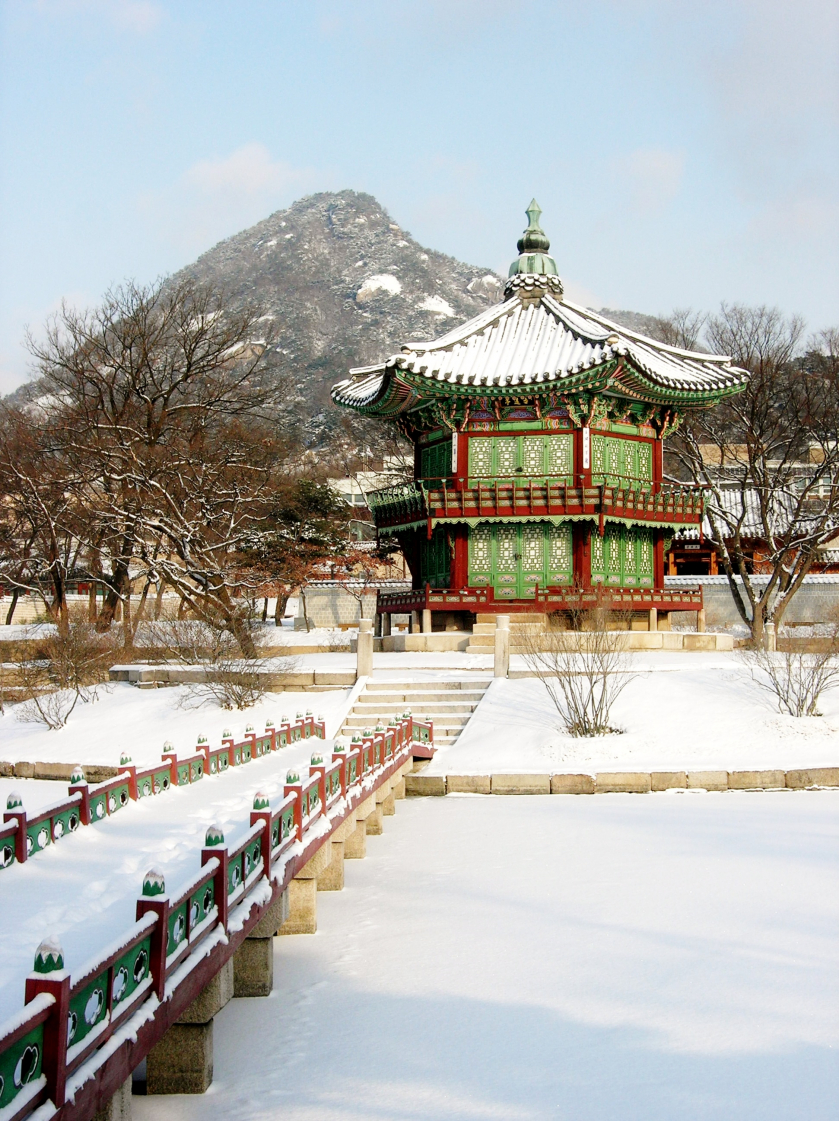
The beauty, both quiet and splendid, of Khanh Hoi Lau in winter
Blessings in names
Each structure inside Gyeongbokgung is named with the meaning of wishes and advice from the ancestors. For example, Geunjeongjeon (근정전) means “All matters will be managed properly if the king shows diligence”.
With Gwanghwamun being the main southern gate of the palace. The original name of this place was Nammun (남문) but during the reign of King Sejong (세종대왕) it was changed to Gwanghwamun which means “The king’s virtue illuminates the whole country”.
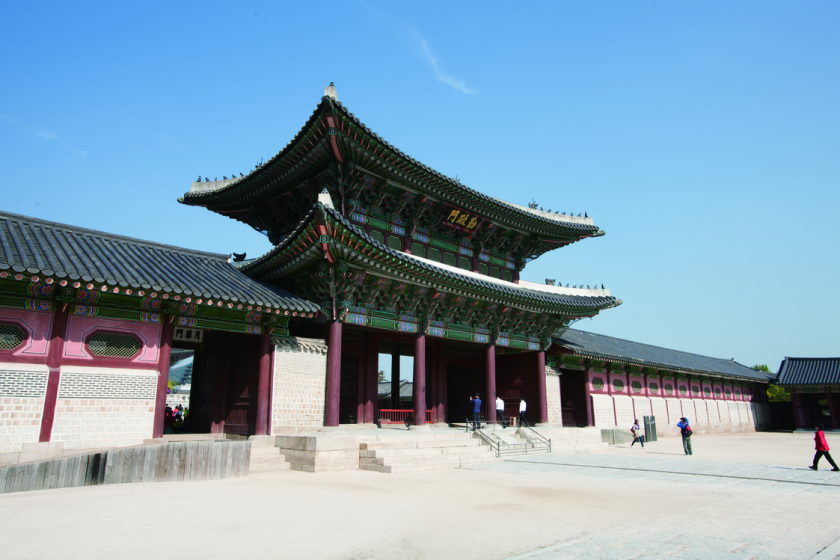
Gwanghwamun South Gate means “The king's virtue illuminates the whole country”
About the name Gangnyeongjeon (Gangnyeongjeon – 강녕전) - the king's resting place. In the Korean concept, Gangnyeongjeon is one of the Five Riches, meaning "health". People named the palace with the meaning of praying for the king to always be healthy. Or the meaning of the name Giao Thai Palace (교태전) is the wish for the harmony of yin and yang, and a smooth birth.
And finally, Gyeongbokgung. The two words Gyeongbok (경복) are used in Korean poetry to wish the king, his descendants and the people great blessings in a peaceful era. Perhaps the sacred wish contained in the two words Gyeongbokgung was fulfilled when the Joseon Dynasty became the most influential dynasty and at the same time left the most culture to Korea today.

The meaning of the two words Canh Phuc was fulfilled when the Joseon Dynasty became the most influential dynasty.
Four seasons through the centuries
The architecture of Gyeongbok retains its ancient beauty, majestic and majestic, full of the royal power. At any time of the year, this place has its own beauty. But the most special are always autumn and winter.
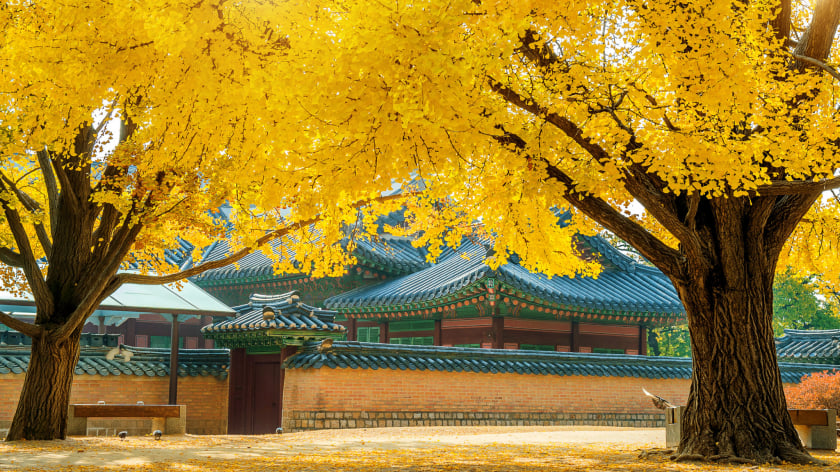
The ancient ginkgo tree covered the castle roof with its golden leaves, illuminating a corner of the sky in the palace.
In autumn, the scenery here is even more magnificent. Around the ancient palace and pavilion are ancient ginkgo trees covering the castle roof with brilliant yellow leaves that light up a corner of the sky, and layers of red maple leaves reflecting on the calm blue lake surface...
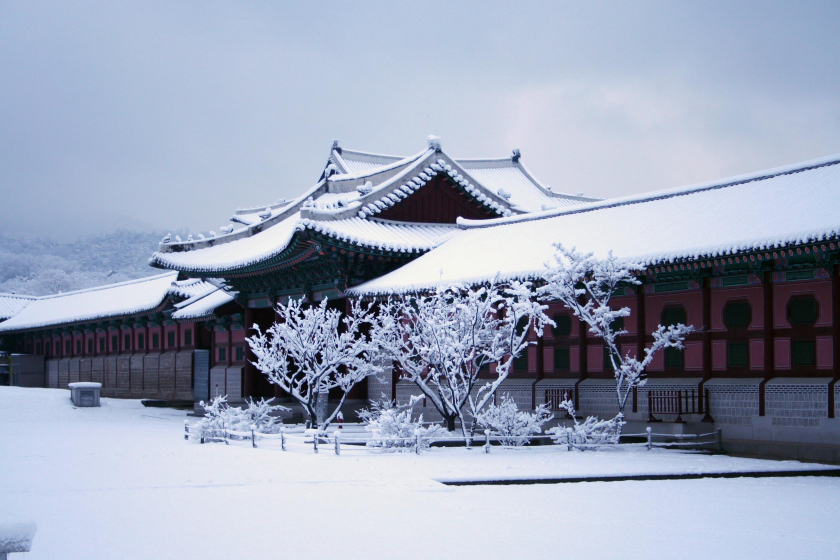
Snow covers the exquisite reliefs, making Gyeongbokgung Palace both magical and romantic.
And then very gently, when winter comes, the magical and splendid color change of the trees and leaves in the royal garden is gradually replaced by the pristine beauty of cold. The lakes are covered with a thin layer of ice and on the eaves, snow covers the delicate reliefs, making Gyeongbokgung Palace both magical and romantic in the Korean winter. The nature of the present is blending and adding to the majestic splendor of the ancient pavilions of many centuries past.






